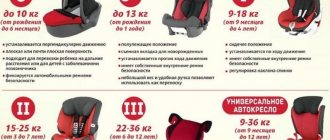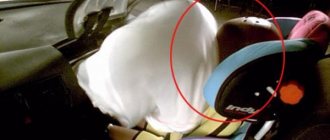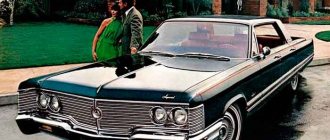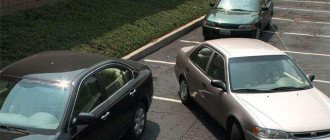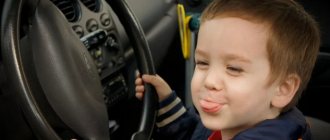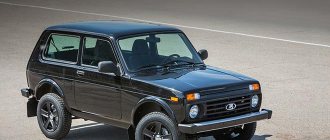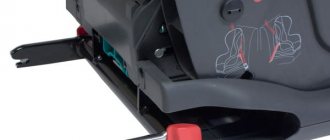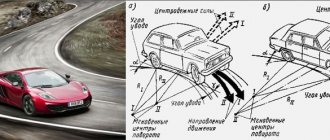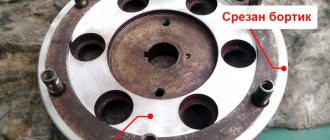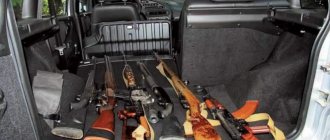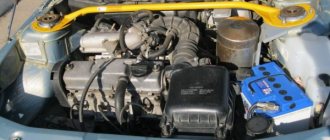A child car seat is an important part of the passive safety of a child in a car. Currently, when transporting children, this product must be in a passenger car, and it must also be provided in public intercity transport. For many years, engineers and child seat designers have worked to minimize the number of injuries and deaths in children in accidents. A wide variety of models have been developed: VIP class and budget, with different fillers, with different fastenings. But they all have the same function: to preserve the health and life of your children.
How to choose a car seat for a child?
First of all, let’s determine what types of car seats there are by age:
- Group 0 – 0-10 kg, 0-6 months. The cradle is used, sideways, with your feet towards the door.
- Group 0+ – 0-13 kg, 0-1 year . Can be used as a carrier chair.
- Group 1 – 9-18 kg, 9 months-4 years. For a sitting position, in the direction of travel.
- Group 2 – 15-25 kg, 3-7 years. Installation in the direction of travel.
- Group 3 – 22-36 kg, 6-12 years. The main advantage is compactness.
3 groups and a universal option
Basic tips for choosing a car seat:
- Take into account not only the baby’s age, but also his weight and even height.
- It is best not just to take the necessary measurements of the future passenger, but to go to the store with him. There is a demo stand where you will see how comfortable the baby will be, and you will also find out on the spot whether this seat is suitable for your car.
- Try to secure the car seat, carefully check whether the belts are comfortable, whether they have fasteners, whether the fabric pads on the locks are elastic and wide, and whether the lock is locked so that the baby does not open it on his own on the way.
- A guarantee of compliance with strict European safety standards and passing all tests is the presence of the ECE R44\03 or ECE R44\04 on the belt. Without it, there is reason to doubt the safety of this car seat.
- Side protection must be installed! It protects neck, head and shoulders in case of a side impact, which, unfortunately, is not uncommon.
- Overall safety largely depends on the strength of the frame. Metal is stronger, but it is quite heavy. If you don’t want to have extra weight in your car, choose a frame made of primary processed plastic , it is much stronger.
- And, of course, do not buy a car seat for your child at dubious points of sale, but go to a company store. There, of course, it is more expensive, but much more reliable in terms of safety. And also - a huge selection, the opportunity to consult an expert, the availability of certificates and the opportunity to try out the purchase at a demo stand.
- You shouldn’t look for a used baby car seat at a cheaper price. It may have hidden defects and be sold after an accident (although by law it must be disposed of).
Pay attention to these tips
How to transport a newborn
The main features of the device are as follows:
- durable body;
- devices to protect the baby’s body from impacts;
- belts holding the child inside the structure;
- orthopedic base (inner surface) of the chair.
According to the method of placing the baby in a child car seat, all models can be divided into two groups: group “0” and group “0+”. The first (the car seat itself) is characterized by the fact that the child is placed exclusively in a supine position. The second (car seat for newborns) allows you to transport a baby, who cannot be seated like an adult, half-sitting (the legs and head are raised, special bolsters are placed under the head and neck).
This is the main difference between the two devices. Often, such car seats can be fixed to the stroller frame. In addition, a distinctive feature of the car seat is its handle, which makes it possible to use it as a baby carrier.
In the infant carrier, the baby takes a natural lying position for his age.
The maximum weight for which both groups are designed, according to the manufacturer’s documentation, is 10-13 kg, the maximum age is 1-1.3 years. But reviews from parents indicate that in most cases, children outgrow such car seats and bassinets by six months.
Where to attach a car seat in a car for a child?
Features of securing a car seat primarily depend on the age of the baby.
- Group 0 and 0+ is also a car seat ; it is mounted in front, against the direction of the car. The fastening system is Isofix, or stationary car belts. In this case, the airbag must be switched off.
Correct fastening
- For other groups, the correct installation point is the rear seat.
There are 3 options for installing a car seat: behind the driver's seat, behind the passenger seat, in the middle.
- The third option is a universal method, used up to the age of three. is surrounded on all sides , which in the event of an accident will take the impact and protect the baby. In addition, adults can be located next to the baby, even on both sides, which will allow them to observe him, entertain him and pay attention - at this age it is still difficult for a child to remain alone with himself for a long time.
- When the seat is located on the passenger side, the child is also in a fairly safe zone ; he is in danger only if he is hit on the right side, which does not happen so often. Suitable for groups 1 and 2. An adult can also sit nearby, but at this age children do not require so much attention; they will willingly occupy themselves with a toy, tablet, or phone. It is convenient to seat a baby in a seat on the sidewalk side, but an adult, who will sit next to him in the back, has to go around the car and sit down from the roadway.
- The option of attaching a seat behind the driver's seat is relevant for older people, groups 2 and 3. Such children are already able to climb onto the seat on their own; adults only need to check that the belts are fastened. Parents calmly sit in front - at this age, children do not require the presence of an adult nearby, but prefer to do without him.
Advantages of the car seat installation location
Additional Security Measures
While the car is moving, the driver does not always have the opportunity to be regularly distracted by the child. A small passenger, left unattended, may well harm himself by unfastening the child seat belts. To avoid such situations, it is necessary to take some preventive measures:
The child in the car should be as busy as possible, so take with you toys, books, and the child’s favorite items to occupy his attention during the trip. Ensure that child seat belts are secured as securely as possible. They should be difficult to unfasten (so that the child does not master this task).. High-quality fixation systems, correct placement of the child seat in the cabin, competent organization of fastenings (in all ways available for the existing seat model) guarantee almost one hundred percent safety of your most important passenger.
High-quality fixation systems, correct placement of the child seat in the cabin, competent organization of fastenings (in all ways available for the existing seat model) guarantee almost one hundred percent safety of your most important passenger.
To fully guarantee safety and comfort, it is enough to add only the attention of elders. Manufacturers of modern reliable child car seats have already taken care of the rest.
https://pricep-vlg.ru/instruktsii/kak-ustanovit-detskoe-kreslo/https://childlands.ru/specustrojstva/avtokresla/kak-krepit-detskoe-kreslo-mashine-vidy-bezopasnyx-kreplenij-osobennosti. htmlhttps://jrepair.ru/interesnoe-na-jrepair-ru/kak-ustanovit-detskoe-avtokreslo
How to secure a car seat in a car with belts?
For the safety of your baby, it is necessary not only to make the right choice of device, determine the location of its attachment, but also to correctly secure the car seat with belts. An incorrectly installed seat will not save you in an accident, but will cause significant injury. Take this moment very seriously.
It is also important to secure the seat correctly - otherwise injuries cannot be avoided.
The following methods can be used to install a car seat:
- Stationary car seat belts
- Isofix system
- Latch or SuperLatch system
Every car is equipped with a stationary standard three-point belt; it is a universal and inexpensive tool. With it, the chair can be installed without problems on any of the seats. However, its installation is quite complicated, and if the chair is equipped with a table, then there may simply not be enough belt. And the security of such a mount is not very high.
When using this method, it is important to remember the following:
- Car seat belts do not guarantee rigid fixation of the car seat for a child, but still it should not wobble, play is acceptable within 2 cm.
- It is necessary to adjust the belt tension after the small passenger is seated in the seat. The fabric cannot be twisted, sagging, or fit too tightly. The best gap between the belt and the child's body is about 3-4 cm - 2 fingers.
- Install a fastener on the belts so that they do not stretch or slip while driving.
- The tape should go through all the guides and be located at the level of the child’s shoulders and hips. Under no circumstances should the belt be at the level of his neck.
In the rear seat
Installing a car seat in the rear seat is as follows:
- Place the car seat on the seat. According to the instructions for the car seat, guide the belt strap through the special holes.
- Tighten the belt and lock the buckle.
- Press down on the chair and make sure it is well secured and there is no excessive play.
- Release the seat of the chair from the belt tape, place the baby in it, and fasten the belts.
- Keeping an eye on the pads, secure the locks.
Important Tips
As Russian legislation prescribes, children must be transported in cars in special seats or other proven devices. Unfortunately, many drivers attach seats incorrectly, which puts their baby at risk. That is why, in order to correctly install a child seat in the back seat according to the diagram, you should turn to friends or acquaintances for help, and also study the instructions.
Here are some important tips to help avoid mistakes:
Some families end up with loose items in their car. In the event of an accident, they harm the child. They should be removed before the trip or hidden in the trunk.
All belts and straps are attached close to the baby, especially if his clothes are too bulky. It is advisable to remove it completely, otherwise the child will be weakly attached.
When the season has changed, the straps and belts are “adjusted” to the clothing
It is important that they hold the child as tightly as possible. . The most common mistake when attaching a car seat is driver negligence.
It happens that he installed the seat, but did not fasten the baby. The security level is zero.
The most common mistake when attaching a car seat is the negligence of the driver. It happens that he installed the seat, but did not fasten the baby. The security level is zero.
As for the child's head, there should be free space between it and the top of the chair. The instructions for a particular chair tell you what distance is acceptable.
You should not make your own “modifications” to the cradle. It is made taking into account the anatomical features of the baby. Some mothers forget about this when they put pillows and mattresses in the chair.
Small or very wide seat belts are dangerous. They should be adjusted for height, not height.
When seating the baby, the driver should make sure that the shoulder straps are attached correctly. You can check this by inserting your finger under the strap at the level of your collarbones and pulling it up. If everything is in order, then you won’t be able to pinch the seat strap with your thumb and forefinger.
How to attach a baby car seat in a car?
A car seat is a car seat for children of group 0, it is used from birth to 6 months, and it provides for transporting the child lying down. It’s convenient and safe to ride in it, but for parents the following difficulties arise: the inability to later convert the device for older people, and the bulkiness of the design, which occupies the front seat, pushed back, thereby blocking the space behind the passenger, or two rear seats.
Securing it against traffic
If you still need to secure a child car seat in a car, proceed as follows:
- The device is fixed against the direction of the car, in a place near the driver, and the airbag is turned off.
- The cradle is secured with belts; the transverse and diagonal tapes should not be tangled.
- Adjust the tilt angle back, it cannot exceed 45 degrees.
- Use a special roller or rolled towel when provided by the manufacturer.
- Place the baby in the cradle , secure the straps by installing the clips at armpit level.
- Belts must have special pads to prevent chafing in the child's groin. Place a soft towel if there is no padding.
- Adjust the straps, they should not be tight and at the same time secure the baby. This is about two fingers between it and the belt.
- Measure the temperature in the cabin and, if necessary, cover the baby with a blanket.
How to attach a children's triangle in a car?
The child triangle is a special adapter that fits onto the seat belt and is used to fully protect the child. The fact is that an ordinary adult belt is suitable for a passenger over 150 cm tall and, if applied to children, it may not protect them in the event of an accident, but may injure them.
- This is because due to the child's small stature, the diagonal belt will pass in the neck area, which is very dangerous in the event of a collision. The triangle adapter moves the belt away from the neck and places it in the chest area, so it can protect a small passenger in an accident.
- Therefore, when there is no car seat, a child from 4 to 12 years old is transported using a triangle. It can be used not only in a personal car, but also in others, simply by putting it on an existing seat belt. This is very easy to do by simply passing the strap through the holes in the triangle and placing it on the baby's chest.
Attach the triangle if there is no chair
- Make sure that the straps are not twisted and that the material adheres well to the surface of the child’s body.
- However, keep in mind that using a triangle is not a solution to the situation, but rather a palliative. In the event of a serious accident, it does not protect as effectively as if you were using a car seat . Therefore, it is necessary to stock up on such an accessory, but you should not rely on it too much.
Types of fastenings
Until recently, child seats were not a mandatory safety feature. There was only one requirement that the child be secured with belts. In any auto store you could buy a soft pad for a standard seat belt, which made it more suitable for a child.
True, such a system did more harm than good, and another disadvantage was that attaching a cradle with a baby was not easy, and in some cases impossible. We currently use two main types of child seat mounting:
- Standard car belt.
- Isofix fastening system.
Some models of child car seats allow you to use both. There is also a third type of fastening, although not often used in practice: latch, which, like Isofix, is attached to the brackets on the car.
How to attach a car seat to the front seat?
Where to install a child seat? Is it worth installing it from the front? Please note that there is no prohibition on such installation. Subject to compliance with all laws, seats can be placed in the front.
And this has a number of advantages:
- Children are more willing to ride in the front seat - there is better visibility and they get the impression of participating in the movement.
- If there are no adults around besides the driver, then it is easier for the driver to control the child and talk to him.
- Seats in the back are freed up for other children and adults.
- There is less motion sickness here.
How to attach a car seat to the front seat, taking into account the category:
- 0 – baby seat. If you use a device removed from a stroller, you can only place it on the back seat, because the design does not allow it to be installed in the front.
- Group 0+ – mounted on the front seat with the back facing forward, secured according to the design of the car.
- Group 1 - can be located anywhere, in any position, while almost always parents prefer to seat the child facing forward.
- Groups 2 and 3 – here only a forward facing seat is possible. Use regular car seat belts.
In the front, the child feels like an adult.
With all the advantages of the front seat, it remains the most dangerous when traveling. Once you have chosen this place, follow these rules:
- Turn off the front airbag; it protects an adult well, but can injure a child. In this case, the side airbag cannot be turned off.
- Position the front seat with the car seat as far away from the dashboard as possible, closer to the rear seats
- Adjust the side view mirrors so that the high backrest of the child seat does not block your view.
Safest place to install
Traffic police rules allow a child to be transported in a car seat in any seat. But the exact answer to the question “where is it safer?” does not exist. Each location has its own advantages and disadvantages.
In the front seat next to the driver
This position is equally convenient for children and parents. Kids get a chance to feel like adults and a wide view of the road, and this makes it much easier for parents to monitor their child’s behavior. If you get stuck in a traffic jam, you can easily feed the child or play with him a little.
Where to place the chair is up to you to decide.
However, according to statistics, passengers in the rear seats are 2.4-3.2 times more likely to survive a serious car accident. But during fast braking and minor accidents, the position of the cradle seat (it is only suitable for infants) with its back to the direction of travel is considered the safest: it is almost impossible to damage the baby’s spine.
If you put a child over 3 years old in a regular child seat, then placing him with his back to the traffic will not work, so this option can expose the baby to great danger. Firstly, if the child’s height is less than 140 cm, he may be crushed by the opened pillow. Secondly, in road accident statistics this place is the most dangerous for people of any age.
In the back seat on the right
This place is considered the most prestigious according to the rules of business etiquette, and also almost the safest for left-hand drive cars. It is located in the opposite corner from the oncoming lane, so it receives the least damage in an accident.
For parents, the right seat is especially convenient because it allows the child to sit on the sidewalk side without putting him at risk from the roadway. It is even more convenient if the child is already big enough and is able to sit down on his own and buckle up.
The only disadvantage is that the driver practically does not see the child in the mirror. But if necessary, it is possible to buy and hang an additional mirror.
Behind the driver
The main disadvantages can be considered the dangerous landing of the child on the side of the roadway, as well as the high probability of a collision with a car from oncoming traffic. However, some studies show that this place is the safest because, if a collision is possible, the driver instinctively turns the steering wheel to protect himself from the impact.
According to official statistics, the seat behind the driver is considered the safest for an adult, but it is better to seat a child in the middle
Back in the middle
This place is rightfully considered the safest for a child. Therefore, if the interior design of your car allows it, be sure to place a child seat there. Safety is determined by the fact that regardless of the position of the steering wheel, as well as the side and direction of impact in the event of a collision, there is enough space in the middle of the rear seat to prevent injury. In addition, in this place the child cannot be injured from an deployed airbag. The likelihood of a child being injured is high only in the event of a frontal impact.
How to secure a car seat in the back seat?
- The rear seats of the car are the safest for children. Moreover, the best place is considered to be the center of the rear seat, followed by the seat behind the passenger, and then behind the driver.
- to attach the car seat for your baby so that he rides facing the direction of the car, with his legs towards the rear seats. At the same time, his body is located reclining . Very young children's heads are usually large and heavy, and their necks are thin and weak. Therefore, it is very important to prevent large loads on these parts of the body, not only during accidents, but also during sudden braking.
- How to fasten a child car seat in the back? This can be done in three different reliable ways. When using any of them, always carefully read the installation manual, which will answer all your questions.
- Isofix, Latch or universal fastening systems that meet international safety standards. Most modern cars are equipped with them; they are reliable and safe.
- Installing them is very simple, just find the fasteners on the car seats and attach the car seat to them - all certified car seats are compatible with such connectors. We will talk about these systems in more detail later.
Fasten using special grooves
- Secured with installed seat belts. Installed in the absence of the above-mentioned fastening systems. For this case, car seats have grooves for the belt, and the instructions for your car contain an explanation of how to secure them (we also described above how to fasten the seat using belts).
- Use of fasteners. The method is similar to the previous one, but at the same time, clamps are also installed on the belt to block the car seat from wobbling. If the fabric is too long, an additional knot is tied on it, which makes it possible to shorten it
In all cases, the back seat is always preferable to the front. The exception is the car seat for group 0, which is placed on the front seat, which is moved back to the maximum.
Mounting methods: pros and cons
As a general rule, buckle or secure the car seat, preferably in the center of the rear seat, with the child sitting forward facing (not applicable to infant models). Currently, the range of the product under discussion is quite large. The entire set of car seats differs not only in colors and sizes, but also in mounting methods. A certain system of approaches and points of view has also developed on this issue. Currently, fixation methods are presented below.
Isofix
The most popular child restraint system for transportation in personal vehicles. This option is designed to attach the seat to the body at the rear of the vehicle. Fastening is carried out using special carbines. Stainless steel is used in the manufacture of the product. Direct connection to the vehicle body avoids damage to structural elements and injury to the passenger. Another positive side of this option is ease of use. To install, simply insert the chair into the grooves until it stops. This option is highly reliable.
Latch or Super Latch
Here everything happens the same as in the previous version. The difference is that a different type of strap is used. In the domestic open spaces, this option has not received due popularity.
Seat belts
Universal fastening method. In this case, the child seat must have special grooves. There are no general design requirements for such devices. So in this case, you should follow the instructions supplied with the accessory. A negative feature of the belt model is the considerable complexity of the installation process. There are also some differences in the geometry of a car seat and a car seat. This may cause inconvenience to all vehicle occupants.
Anchor strap
Dedicated additional support. Protects the structure from possible movement in case of sudden braking. By the way, it is the anchor product that is easiest to attach to a car sofa. You can do this yourself in just a few moves.
Despite the obvious positive aspects, this type of fastening has a serious drawback. The passenger's body weight should not exceed eighteen kilograms. If this rule is not followed, the system may not work!
Support
Instead of a belt strap, you can use a holder - a holder. It rests on the floor of the car and prevents the structure from moving. A stand can be described as a reliable way to secure a chair. However, the need to install it may require additional material and time costs.
Isofix mounting system: how to secure a child seat?
One of the best systems that allows you to properly secure a child car seat is the isofix system. This is an international certified system accepted throughout the world.
Fastening
The main advantages of isofix are the following:
- Most modern cars are equipped with it
- Easy to install and secured with special connectors.
- It is very difficult to install incorrectly.
- Features a very high level of protection.
- The car seat is secured very firmly , it does not wobble, regardless of whether there is a child there or not.
Isofix mount for car seat, how to mount:
- Find metal brackets between the back and seat of the car and remove the plugs from them.
- If your chair has bracket guides, install them onto the brackets.
- The armchair brackets must be pulled out and snapped onto the brackets.
- Also remove the existing plugs and hide them together with the seat plugs.
- Now all that remains is to place the child in the chair and secure it with the internal belt.
Schematically
It must be taken into account that this system is offered as the main one, and you can attach a car seat up to 18 kg, that is, groups 0, 0+, and 1, for children up to 4 years old. When your child has crossed this threshold, isofix can only be installed as an additional system, reinforced with devices. This is an anchor belt or a telescopic stop.
How to sew a cover for a car seat: instructions
Young parents are very sensitive to the tissues with which their baby’s body comes into contact. Car seats are no exception. Indeed, especially in hot weather, you want your little one to be comfortable and pleasant on the trip. And if we take into account that mattresses in transportation devices are sewn from synthetic fabrics so that the product retains its presentation for longer, then the question of how to sew a cover for a car seat with your own hands becomes especially relevant. The task is not easy, but quite doable.
Sequence of actions and photos for sewing a cover for a car seat with your own hands
It is best to sew a cover for a car seat from calico or poplin. On average, you will need fabric 1.2 m long and 2 m wide.
- We start with the pattern.
To do this, we apply oilcloth to the child seat and outline the boundaries and shape of the device (separately the sidewalls and the central part). You can make a pattern without removing the mattress using oilcloth - We transfer the pattern to the fabric, cut it out, not forgetting to leave a 2 cm allowance around the perimeter.
- We sweep away the details.
- We apply it to the car seat and mark the locations of the slots for the belts.
The cover can be immediately made for the internal belts of the infant carrier. - We reinforce these areas with non-woven fabric and make cuts.
- We process the cuts with an overlock or zigzag.
- We cut out a drawstring for the elastic throughout the cover.
Thanks to the elastic drawstring, the cover can be removed - We sew down the details.
Seam allowances must be at least 1.5 cm - If necessary, we also make covers for belts.
The removable cover makes cleaning the device much easier
Child car seat latch system
The latch system is an improved version of isofix. They are interchangeable, but latch appeared later and therefore has a number of improvements:
- The chair itself weighs less because it does not have a heavy metal frame, but has strong and lightweight straps.
- The system is not rigidly attached, but very effectively protects against body vibration and holds overloads in the event of an accident.
- Can be used for children whose weight significantly exceeds the isofix weight limit of 18 kg. This value for the latch is 29 kg due to the even distribution of the load when using elastic belts.
- The method of fastening the belts has been simplified; now there is no need to strictly follow the sequence of their fixation.
- It is possible to attach some latch models both along the direction of the car and in the opposite direction.
Fastening
The procedure for fastening the car seat is as follows:
- Find the metal brackets between the back and seat of the car , remove the plugs from them.
- Unfasten the side belts of the car seat and pull them out as far as possible.
- Install the car seat on the selected seat, attach the carabiners to the fasteners.
- Press down on the seat and tighten the side straps.
- Throw the anchor strap over the back of the rear seat, attach it to the bracket, and tighten it.
- Check the fastening and make sure there is no play of more than 2 cm.
How to properly place a child in a car seat?
The safety of a child while driving depends not only on the correct fastening of the car seat, but also on the correct placement of the baby in the seat.
Therefore, take note of these recommendations:
- Set the back of the chair at an angle of 30-45 degrees.
- Place or place the baby in the car seat.
- The baby's legs should be straight, not bent at the knees.
- The baby should have soft cushions on both sides of his head.
- Fasten the seat belts so that they do not put pressure on his chest.
- Check the belt tension - an adult's palm should fit between the baby's back and the chair.
- You need to dress your child lightly ; warm and tight clothes can impair the effectiveness of the belts in an extreme situation. If necessary, simply cover the baby with a light blanket.
Seat your baby correctly
Are you already convinced of the importance of this purchase?
Now that you know how to properly install a car seat in a car and secure it, you can rest assured about the safety of your little one while traveling together.
Useful children's articles on the site:
- Why doesn't the child listen?
- Delayed speech development in a child
- What to do if your child constantly lies
- The child is a bully - what to do
- What can a child have with a fever?
Carrying chair group 0
Models in this group are designed for children from 0 to approximately 1.5 years. In the carrier chair, the newborn is positioned at an angle of 30-45 degrees, which allows the child to lie down and breathe freely during the trip
In addition, such devices take up less space in the car than cradles, which is very important if you have a large family and you need to choose a compact model
Carrying chairs are secured with standard seat belts, strictly with the back in the direction of travel. This position of the child is associated with safety - his head is quite large in relation to the size of his body, the spine is still flimsy, and the muscles are not strong enough. The slightest jolt, sudden braking or collision can lead to tragedy. When the baby is positioned with his back to the direction of travel in the above cases, he will not jerk forward by inertia, but will gently press into the car seat.
Carrying chairs have special convex bolsters that hold the child’s head from the sides, preventing injury. The baby himself is fastened to his seat with belts.
Due to the fact that the seats are mounted in the safest position - against the direction of travel, manufacturers reduce the weight of the devices, but it is still 3-5 kg. If you add the weight of the child to this value, you get a rather heavy burden, with which running around the shops is not at all comfortable. In many European countries, children under 2 years of age are required to ride only with their back to the direction of travel. Statistics show that in these countries, child mortality from road accidents is very low. In Russia, after “outgrowing” group 0+, the child is transferred to group 1 chairs, which are attached in the direction of travel. Often, if a child is large or plump, or wears bulky clothes in winter, he no longer fits in a 0+ chair even before his muscles and spine are sufficiently strong. His parents buy him a Group 1 restraint, putting his life in danger.
